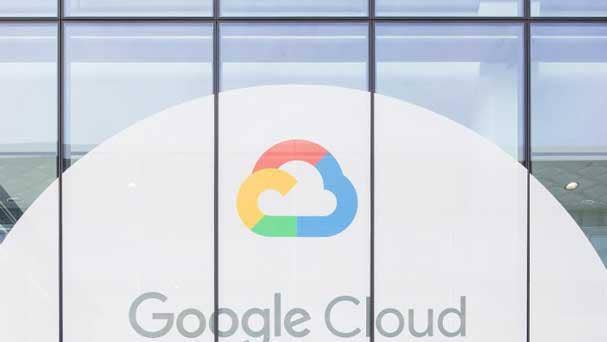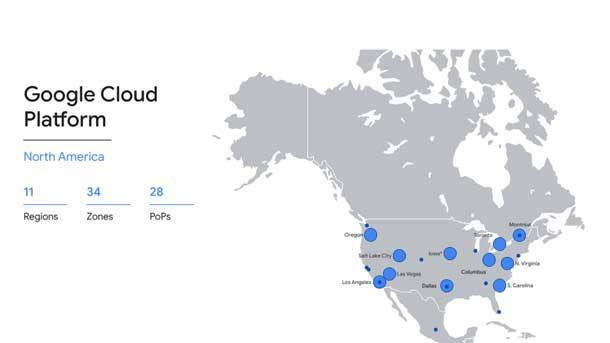Google Cloud Channel Chief: 8 Huge Partner Initiatives Today
From boosting the Google Cloud Marketplace to being a “co-pilot” with the channel, Google Cloud’s global channel chief, Kevin Ichhpurani, takes a deep dive with CRN about some of the company’s largest partner growth initiatives today.

Kevin Ichhpurani Explains Google Cloud’s Most Important Partner Strategies Today
Google Cloud is looking to win more market share by implementing an end-to-end channel strategy and differentiated go-to-market opportunities with the goal of becoming the most open cloud computing company in the world.
Google Cloud’s Global Channel Chief Kevin Ichhpurani takes a deep dive with CRN about some of the company’s largest partner initiatives being driven today in order to grow and win more in the multi-cloud era.
Mountain View, Calif.-based Google’s cloud division continues to double down on combining channel partners with its broader ISV and technology ecosystem partners with Google’s sales team acting as the “co-pilot” in customer accounts, according to Ichhpurani.
“We’re creating this strategy of starting with what the customer problems are, and then what are the set of partners that need to come together to solve an end-to-end problem. Think of it as LEGO blocks,” said Ichhpurani, corporate vice president of global partner ecosystem and channels at Google Cloud. “It takes a village today to solve customer problems.”
[Related: Thomas Kurian: Why Google Cloud Bests AWS, Azure For Partners]
The fast-growing cloud computing standout is also investing heavily in its Google Cloud Marketplace to create holistic solutions where customers can spend their cloud commitment, not just on Google products, but channel partner solutions and third-party offerings as well.
“Customers are looking for end-to-end solutions. If you’re a reseller like SADA or like an Accenture, you could provide that entire end-to-end offering with Google products plus the Marketplace, combined, and make it seamless for the customer,” said Ichhpurani.
Ichhpurani took over the reins of leading both Google Cloud’s channel and technology partner ecosystems earlier this year after being with the company for five years. He played a major role in helping increase Google Cloud sales in its first quarter 2022 by 44 percent year over year to $5.82 billion.
In an interview with CRN, Google Cloud’s worldwide channel leader discusses eight huge partner strategies that are front and center in Google Cloud’s bullish growth strategy.

‘Completely Open’ Google Cloud Marketplace With More ISV Offerings
We’re seeing a massive growth on the Marketplace. We saw a 6x year-over-year growth in gross transaction value through the Google Cloud Marketplace.
The reason we’re seeing such explosive growth is that customer buying patterns are shifting. More and more customers want to procure their ISV solutions via the Marketplace. The reason is, they get a friction-free buying experience. It’s one integrated bill. You basically removed the buying friction in the model.
MongoDB, for example, they’re doing more transactions in the Google Cloud Marketplace than any other marketplace. That’s a very good example of one. Palo Alto Networks is on the Google Cloud Marketplace as well as solutions like DataBricks and Splunk.
We are completely open on the Google Cloud Marketplace: whether its solution is complementary or whether it’s even overlapping with Google products. Because we fundamentally want to provide customer choice.
We believe open platforms are the ones that win in the market. So we are embracing coopetition. If you think about it, whether it’s a complementary solution, or an overlapping solution, the customer can still implement it.
Our commitment to the Marketplace is being an open platform.

Combining The Channel And Ecosystem Partners Together Is Critical
We really see the world as much bigger than individual channel partners, we see it as an ecosystem. The ecosystem and the channel have come together. That’s why we call our organization, Ecosystem and Channels, because the lines are blurring across all partner types.
I could look at a company like NTT: are they an ISV? Are they a technology partner? Are they an SI? Are they a reseller? Are they all of the above and more? So the lines are blurring.
A lot of your services partners are actually building software trying to monetize through IP. Some will resell, some will not resell. So we see this notion of a value network where many partners are coming together to solve a specific problem—that’s our approach versus monolithic partnerships of the past.
So we’re creating this strategy of starting with what the customer problems are, and then what are the set of partners that need to come together to solve an end-to-end problem. Think of it as Lego blocks.
It takes a village today to solve customer problems.
That is really where a lot of our strategy is today, is we really look at it as the broader ecosystem and channel coming together. Because again, not only are your lines blurring, but it takes ‘A’-plus-‘B’-plus-‘C’ in order to solve that problem.
We’ve launched an industry value network where we brought together this network of partners to solve that customer’s problems. We’re delivering value already for customers.

Customers Can Burn Down Google Cloud Commitment Spending On Partner, ISV Solutions
When a customer buys [a partner] solution on the Google Cloud Marketplace, they can burn down their Google spending commitment.
Let’s say, you are a customer of Google Cloud and you have a $500 million commitment with us to spend on Google Cloud. You could burn down that commit dollar-for-dollar if you went and bought $1 million dollars, for example, of a third-party product on our Marketplace.
So it really gives you choice: you can use that towards Google, or you can use it towards ecosystem solutions.
Think about our $50 billion in backlog as like a bunch of cloud commits out there. You can burn down that commit dollar-for-dollar, just like it’s a Google product. So that’s a $50 billion, and growing, TAM.
To the point of less buying friction: when they buy through to the marketplace, it decrements their commits dollar-for-dollar just like it’s a Google product or a third-party product—that’s really compelling.

Google Cloud Reps Are Co-Pilots In ‘Partner-Led’ Go-To-Market
If you think about our delivery model, it’s very unique in the market and represents a huge TAM for partners.
No. 1, we’ve taken a completely partner-led approach to delivery. So when we think about services and having a customer go live, we will bring in a partner and our goal is to have 100 percent attached to partners. We are not building up or a scaling services organization internally, our services organization—think of them very much as a co-pilot.
We want the partners to take the lead. We want to be the co-pilot and provide just the deep safeguarding services, so engineering services to ensure that the customer has a successful implementation. We want the partners to lead in every one of those cases.
For me, it’s been great because there’s no channel conflict. We take a partner-led approach to the delivery.

A ‘True’ Open Platform And End-To-End Partner Approach
If you look at technology partners we sell together with the ecosystem, for example, if a customer says to us, ‘I want to talk to you about the data warehouse.’ Well, we just don’t say, ‘Well, your answer is our data platform and BigQuery.’
We show them in an end-to-end solution that is required.
You need your data from your legacy systems; you need an [Google Cloud] ETL-type capability and we have partnerships like Informatica; you need a catalog capability; and partnerships. We have some very unique partnerships with companies like Collibra. You also need end user visualization, so how do you visualize the data? You could use us or we have great partnerships with Tableau and others.
We’re really showing a true open platform, where we’re going to give prescriptive guidance on what is everything you need to have an end-to-end-story. And not just the technology, but who is the services partner in your country and in your industry that can actually implement the solution.
So we’re really providing that prescriptive guidance and a solution map and those complimentary ISV solutions are on our Google Cloud Marketplace.
What it allows is customers are looking for end to end solutions. If you’re a reseller like SADA or like an Accenture, you could provide that entire end-to-end offering with Google products plus the Marketplace combined, and make it seamless for the customer. That’s really where we see the value is that, the reseller can now resell the solutions that are in the Marketplace.

Cloud Differentiation: Embracing The Multi-Cloud World
Our partners feel that the future of the world is multi-cloud and so do we. We believe that the future is multi cloud. You have to provide customer choice. So when you look at our strategy around the cloud, it’s fully open—meaning you can build once with our Anthos strategy, then you could deploy anywhere. You could run in Google Cloud, or you could run on-prem, or you can run on another cloud—that’s very important.
Why is it that something as simple as like provisioning a VM, you actually had to change lines of code? That never should have been the case.
So we have a fully open strategy where you can build once and run anywhere. If you look at our analytics strategy, we do not require you to move all of the data to Google Cloud. We can federate the query regardless of whether the data is sitting in other clouds. That is a very open strategy.
If you look at what we’ve done with the ISV community, whether it’s complementary or overlapping, we want to provide customer choice. If you look at like many of the open-source partners, our competitors created distributions that compete with them. We’ve put them as first-class citizens on our Marketplace, integrate several of them with our console, and then they have portability because they can move across clouds.

Enabling ‘Deep Specializations’ For Partners
Oftentimes, customers start with a data-driven approach.
So you need to have deep specialization, not just generic GCP [Google Cloud Platform] skills, but deep specialization in areas like analytics, in AI, in cybersecurity, and application modernization, to name a few.
We have 110 different specializations and expertise to give much more granular-level enablement to our partners to solve with the needs of customers are today. Because it’s become very granular what customers are expecting from us and partners.
That’s why we’ve got 110 different specializations and expertise to help our ecosystem. We’ll continue to invest into more of those.

Helping To ‘Transform’ Customers ‘Versus Just Lifting And Shifting’
We’re hearing from partners is they find unique our customer focus on the business, and actually helping with business process improvement or business model reinvention—it is higher value for the customer, that just like say lifting and shifting VMs.
Because we are talking about helping the customer transform. The feedback we’re getting, particularly from our channel is, ‘Well, this is higher impact for the customer. And therefore, it’s higher margin for me as well.’
So it represents a much bigger TAM when you’re helping transform versus just lifting and shifting.
What customers are looking for is a complete solution, and that complete solution includes Google products and partner products to solve a specific problem, as part of their digital transformation journey.